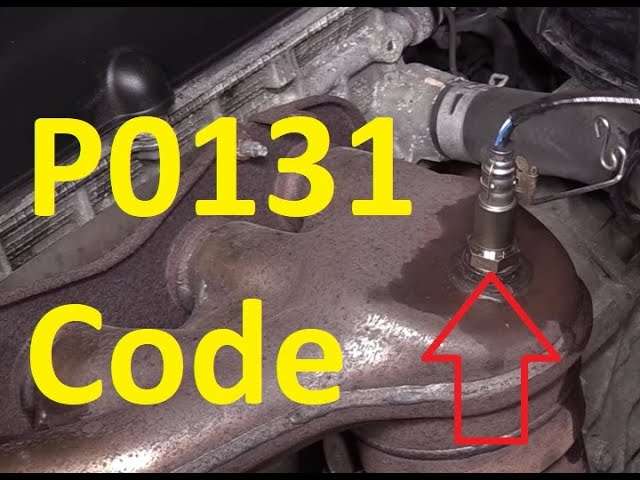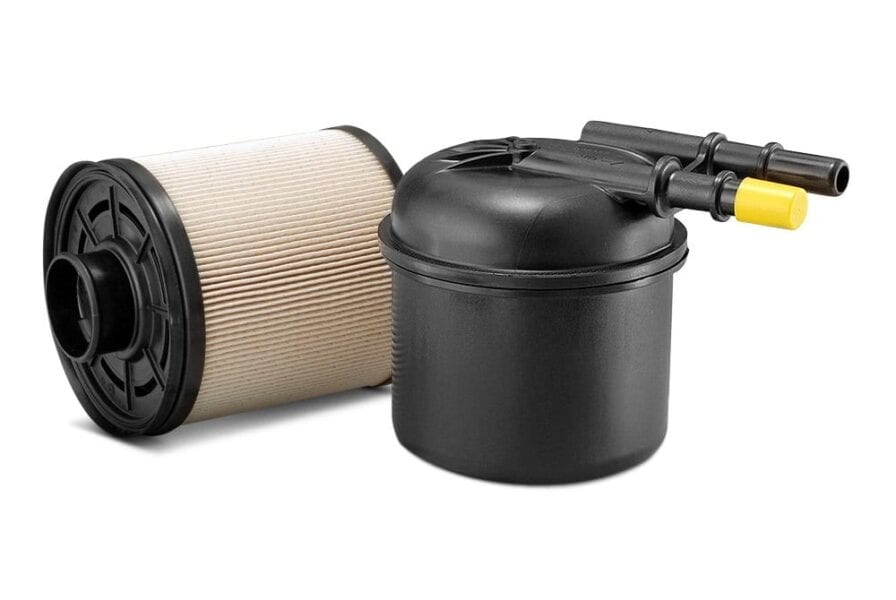
P0131 O1 Sensor 1 Circuit Low Voltage (Bank XNUMX)
Content
P0131 – OBD-II Trouble Code Technical Description
Trouble code P0131 indicates oxygen sensor 1 circuit voltage is too low (bank 1) or incorrect air-fuel mixture ratio.
What does the fault code mean P0131?
Trouble code P0131 indicates a problem with the oxygen sensor 1 (bank 1), also known as the air fuel ratio sensor or heated oxygen sensor. This error code appears when the engine control module (ECM) detects too low or incorrect voltage in the oxygen sensor circuit, as well as an incorrect air-fuel ratio.
The term “bank 1” refers to the left side of the engine, and “sensor 1” indicates that this particular sensor is located in the exhaust system before the catalytic converter.

Possible reasons
Some of the possible causes of the P0131 trouble code are:
- Defective Oxygen Sensor: A faulty oxygen sensor itself can cause this error to appear. This may be due to wear, damaged wiring, or a malfunction of the sensor itself.
- Wiring or Connectors: Problems with the wiring or connectors connecting the oxygen sensor to the ECU (electronic control unit) can cause incorrect or too low voltage in the sensor circuit.
- Incorrect air-fuel ratio: Uneven or incorrect fuel-air ratio in the cylinders can also cause this code to appear.
- Defective Catalytic Converter: Poor performance of the catalytic converter can result in a P0131 code.
- ECU Problems: A problem with the ECU itself can also cause P0131 if it does not correctly interpret the signals from the oxygen sensor.
What are the symptoms of a fault code? P0131?
The following are possible symptoms for DTC P0131:
- Deterioration in fuel economy: An uneven air-fuel mixture ratio can lead to increased fuel consumption.
- Unstable engine operation: Uneven engine operation, rattling, or loss of power may be due to an incorrect air-fuel mixture ratio.
- Increased emissions: Improper functioning of the oxygen sensor can lead to increased emissions of harmful substances in the exhaust gases.
- Engine starting problems: If there is a serious problem with the oxygen sensor, it may be difficult to start the engine.
- Check Engine Activation: When P0131 occurs, the Check Engine light appears on the vehicle's dashboard.
How to diagnose a fault code P0131?
The following steps are recommended to diagnose DTC P0131:
- Checking connections: Check all electrical connections associated with the No. 1 oxygen sensor. Make sure the connections are secure and there are no damaged or oxidized contacts.
- Wiring check: Inspect the wiring from the oxygen sensor to the engine control module (ECM) for damage, breaks, or corrosion. Make sure the wiring is not pinched or damaged.
- Oxygen sensor test: Using a multimeter, check the resistance of the oxygen sensor at different temperatures. Also check its operating voltage and response to changes in the air-fuel mixture.
- Checking the intake system: Check for leaks in the air intake system, as well as for combustion of air in the fuel chamber, which can lead to an incorrect air-fuel mixture ratio.
- Engine Control Module (ECM) Diagnosis: If all other components check and are in good condition, the problem may be with the engine control unit. In this case, diagnostics are required and the ECM may be reprogrammed or replaced.
- Checking the catalytic converter: Check the condition of the catalytic converter for blockage or damage, as improper operation can lead to the P0131 code.
Diagnostic errors
When diagnosing DTC P0131, the following errors may occur:
- Insufficient wiring check: If the electrical wiring from the oxygen sensor to the engine control module (ECM) is not thoroughly inspected, wiring problems such as breaks or damage may be missed.
- Malfunction of secondary components: Sometimes the problem may be related to other components of the intake/exhaust system or the fuel injection system. For example, problems with the mass air flow sensor or fuel pressure regulator can lead to a P0131 code.
- Incorrect interpretation of test results: Incorrectly reading or interpreting test results on the oxygen sensor or other system components may lead to misdiagnosis and replacement of unnecessary parts.
- Insufficient catalytic converter check: If you don't check the condition of your catalytic converter, you may miss a clogged or damaged catalytic converter, which could be the source of the problem.
- Engine control module (ECM) malfunction: If the problem cannot be identified using standard diagnostic methods, it may indicate a problem with the engine control unit itself, requiring additional testing and possible replacement.
How serious is the fault code? P0131?
Trouble code P0131 indicates problems with the oxygen sensor, which plays an important role in controlling the air-fuel mixture. Although this is not a critical fault, it can have negative consequences on engine performance and the vehicle's environmental performance. Insufficient combustion efficiency can affect fuel consumption, emissions and overall engine performance. Therefore, it is recommended to carry out diagnosis and repair as soon as possible to prevent further problems.
What repair will help eliminate the code? P0131?
The following steps are recommended to resolve DTC P0131:
- Oxygen Sensor Replacement: If the oxygen sensor is faulty or fails, it should be replaced with a new one that is compatible with your vehicle.
- Checking Wiring and Connectors: Check the wiring and connectors connecting the oxygen sensor to the engine control module (ECM). Make sure the wiring is not broken, burnt or damaged and that the connectors are tightly connected.
- Checking the Catalytic Converter: Check the condition of the catalytic converter for clogs or damage. Suspicious signs may include the presence of oil or other deposits on the catalytic converter.
- Checking the Air and Fuel Filters: Irregular mixing of air and fuel can cause P0131. Check the air and fuel filters for dirt or blockages and replace them if necessary.
- ECM Diagnosis: If all of the above steps do not resolve the problem, there may be a problem with the Engine Control Module (ECM). In this case, it is recommended to conduct additional diagnostics of the ECM using specialized equipment or contact a qualified auto mechanic for additional tests and repairs.
P0131 – Brand-specific information
Trouble code P0131 can apply to different makes of vehicles. Below is a list of several brands with decryptions:
- Toyota / Lexus: Oxygen (O2) sensor circuit 1, sensor 1 voltage too low.
- Honda/Acura: Oxygen (O2) sensor voltage too low - bank 1, sensor 1.
- Ford: Oxygen (O2) sensor - circuit 1, sensor 1 - voltage too low.
- Chevrolet / GMC: Oxygen (O2) sensor error - bank 1, sensor 1 - low voltage.
- BMW: Low voltage of the oxygen sensor before the catalyst - bank 1.
These are just some of the possible explanations for the P0131 trouble code. The decoding may vary slightly depending on the specific model and year of manufacture of the car.

One comment
jonas ariel
I have a Sandero 2010 1.0 16v with P0131 the injection light comes on and the car starts to lose acceleration until it turns off, then I turn it on again it goes about 4 km and suddenly the whole process and sometimes it is even months without any problem.
What can it be???